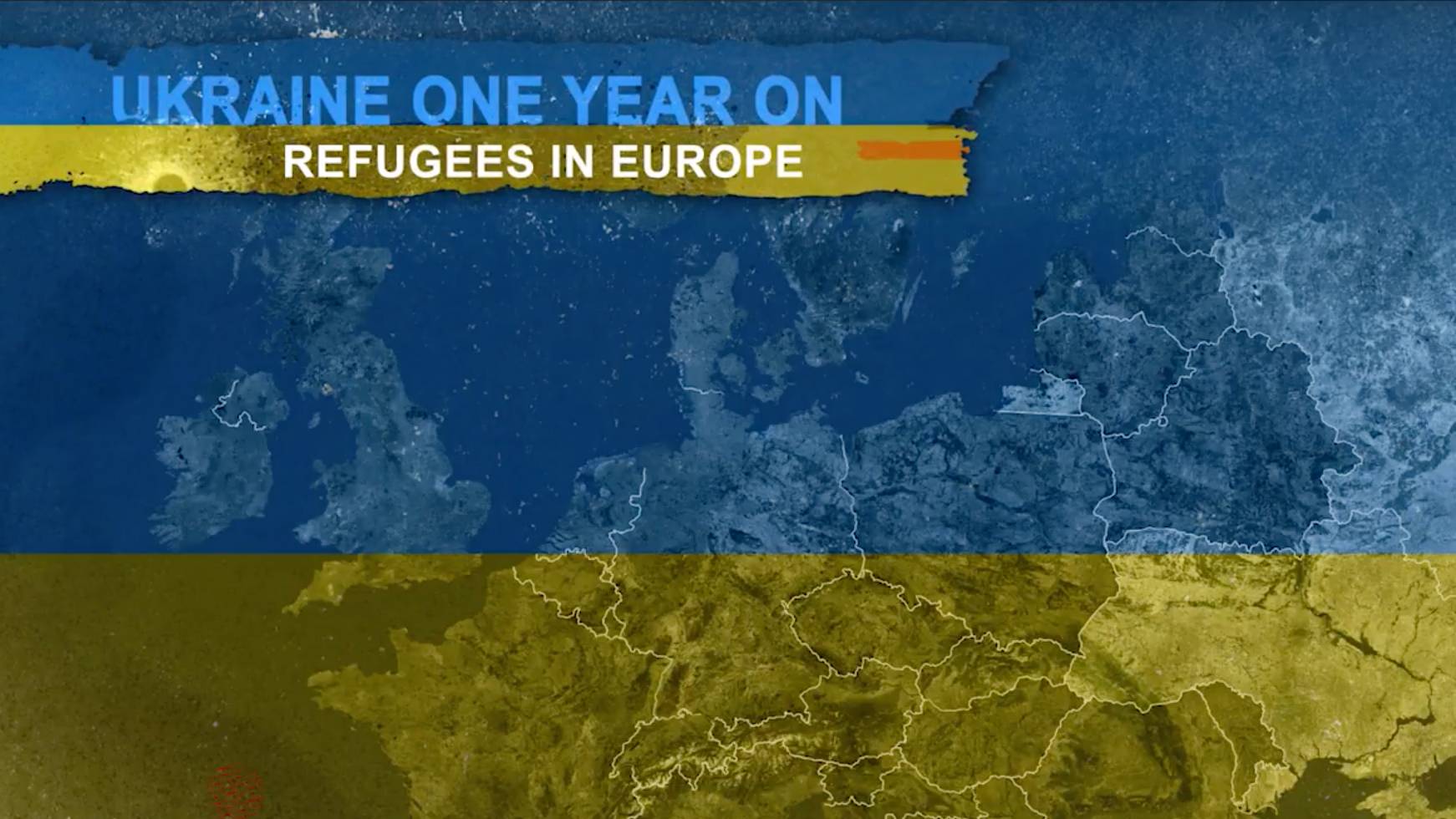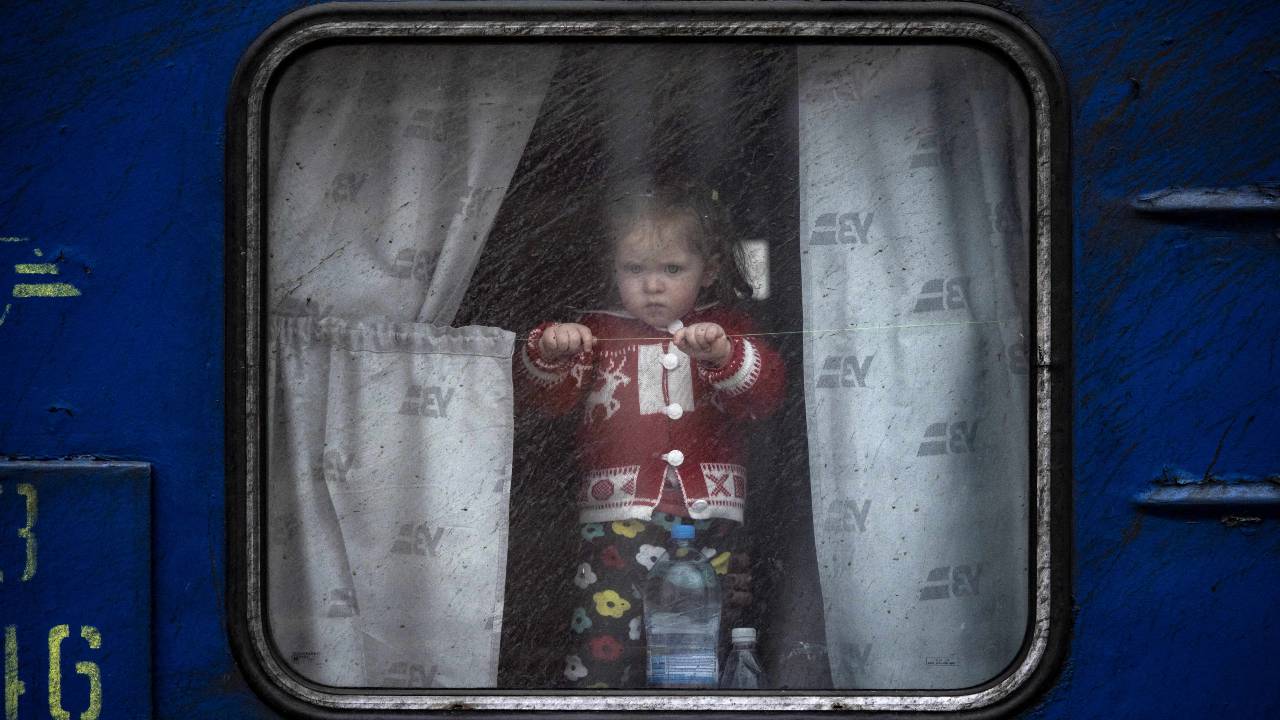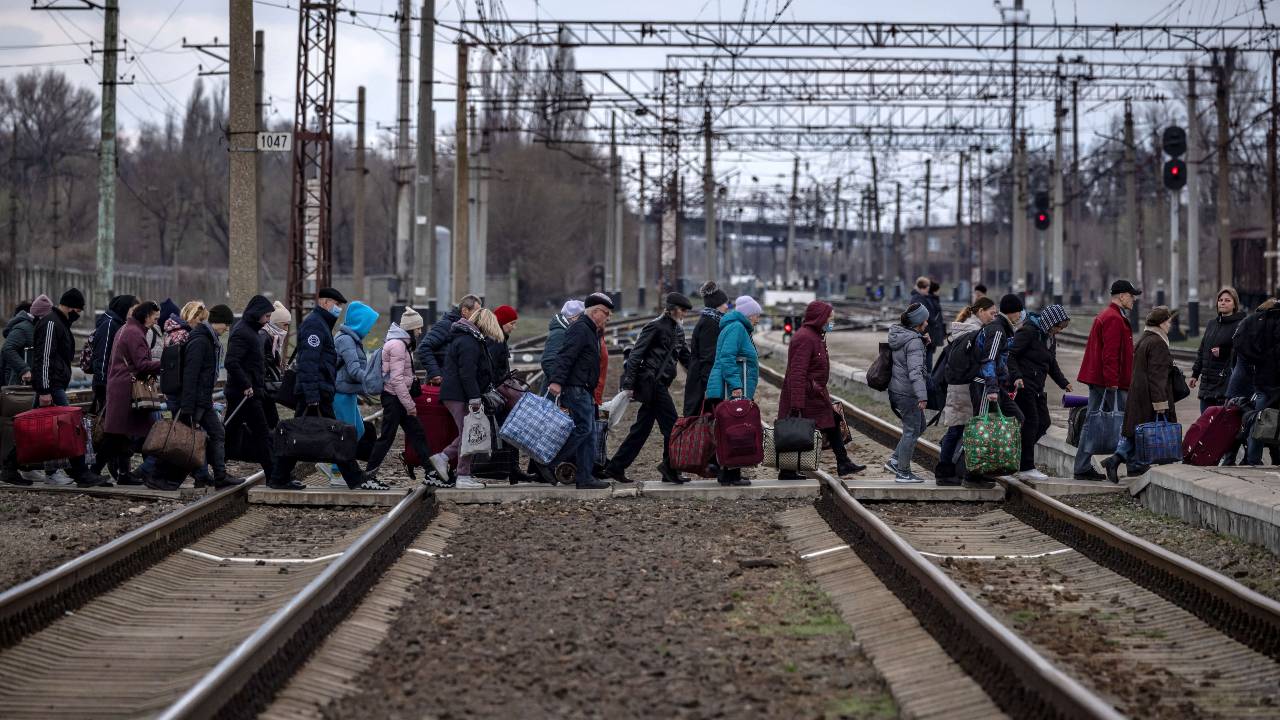00:54

As Russia advanced towards Kiev in the early stages of the Ukraine conflict, the humanitarian situation deteriorated drastically.
Heavy shelling and fighting led to widespread destruction, killing and injuring thousands, including many civilians. Jobs and livelihoods were obliterated and millions were forced to leave their homes.
The amount of people in need of assistance is estimated to have reached 18 million through the course of the year. However, as Ukraine held territory, 10 million would return.
READ MORE
Inside Ukraine's shattered hospital infrastructure
Why was the quake so deadly and what happens next?
Recreating great art with vintage typewriters
As of this year, it is estimated that inside Ukraine there are 4.5 million people who are internally displaced by continued fighting. But many have gone to Russia, with the UN refugee agency (UNHCR) estimating that Moscow has taken in 3 million arrivals in the past 12 months.
Moscow says that this has been the consequence of evacuating refugees from war zones. Some have gone voluntarily, often using their neighboring country as a transit route to reach the EU. But many of those fleeing hostilities were allegedly transfered by Russian troops.

A child leaves on a train from Kramatorsk, Donbass region in 2022. /Fadel Senna/AFP
A child leaves on a train from Kramatorsk, Donbass region in 2022. /Fadel Senna/AFP
A report last September claimed scores of Ukrainians, mostly from Mariupol and the Kharkiv region, had no choice but to go to Russian or Russian-held territory.
The transfers eastwards have aslo included around 14,000 children, according to Kyiv.
Russia's commissioner for children's rights has defended moving minors to its territories as an act of love for orphaned children.
In the last year, the majority of displaced civilians forced to flee Ukraine headed west, with around 5 million now living in mainland Europe.

Children and families arriving last year to board trains at Kramtorsk's central station in the Donbass region. /Fadel Senna/AFP
Children and families arriving last year to board trains at Kramtorsk's central station in the Donbass region. /Fadel Senna/AFP
At the start of the conflict, countries bordering Ukraine were in danger of becoming overwhelmed as millions arrived needing urgent help. The speed and size of the crisis led the UNHCR to implement a Refugee Response Plan where UN agencies, NGOs and governments helped to coordinate the needs of aid, protection and relocation.
In 2022, it is estimated that humanitarian organizations overcame immense challenges to provide critical assistance to nearly 16 million people.
One year on, the bordering nations of Bulgaria, Hungary, Estonia, Moldova, Czech Republic, Romania and Slovakia are still hosting 2.5 million people. That accounts for 50 percent of all refugees that went west to Europe.
However, Poland has the greatest number with 1.5 million, or 60 percent of the refugees in the Refugee Response Plan. Of the other 2.5 million that are hosted across all other European countries, Germany has taken 1 million - or 40 percent.
Animation: Terry Wilson